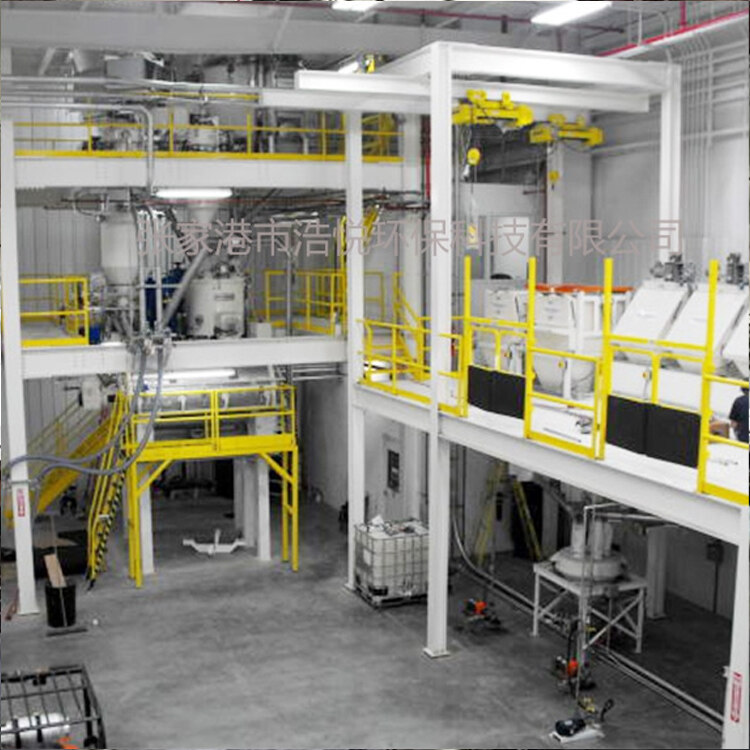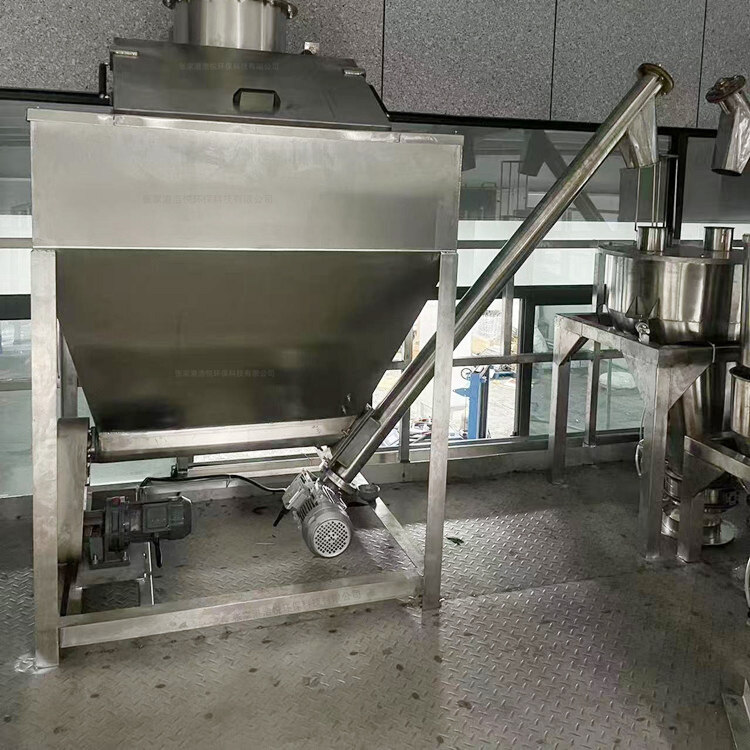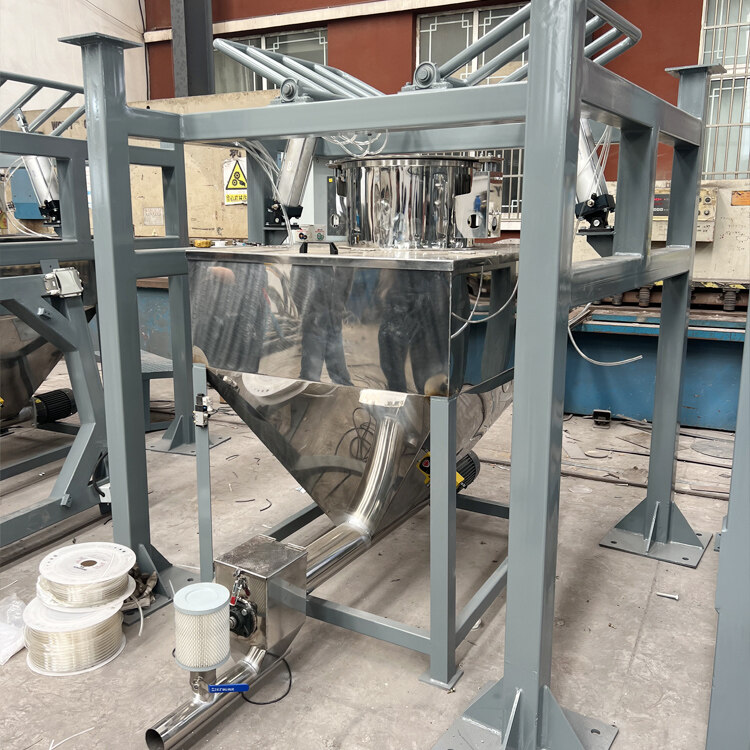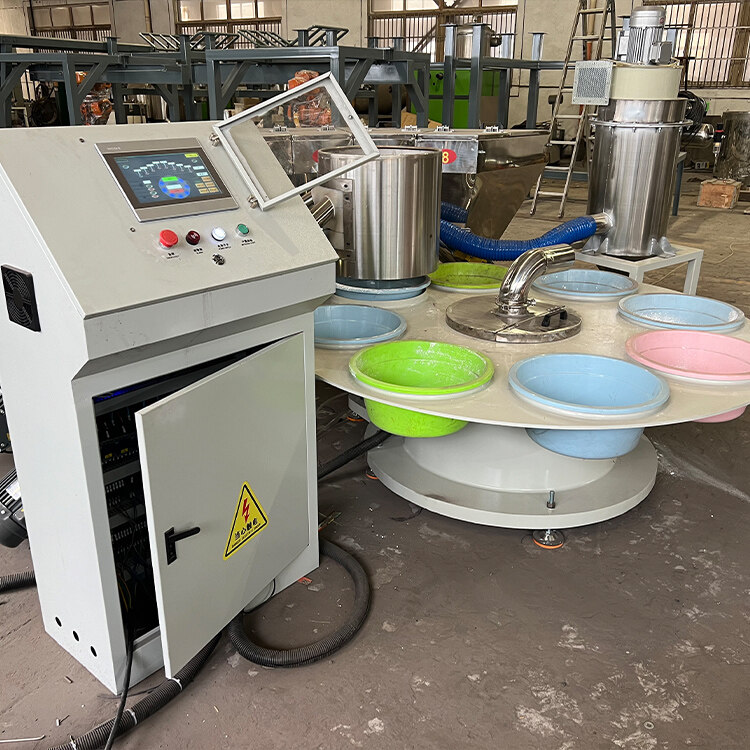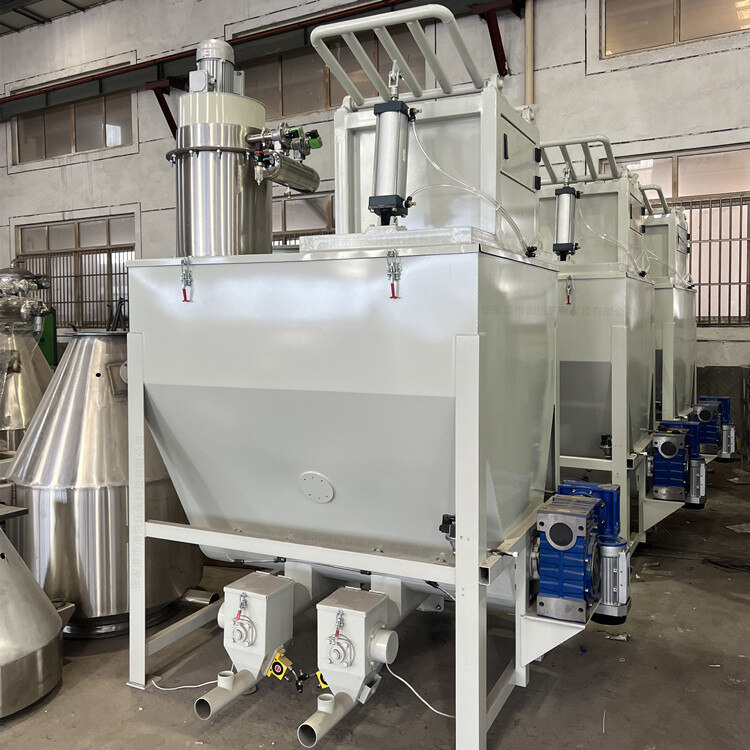- Introduction to automatic batching machine and fully automatic batching machine equipment
- The powder metering system tells you about the introduction of the mixing and drying machine
- 1000kg vacuum feeding machine
- Fully automatic small material batching system
- Research on Innovation of Automatic Weighing Machine Technology
- Design and operation of automatic batching system using PLC, industrial computer and frequency converter
Automatic metering and batching system
- Category:Automatic metering and conveying equipment
- Hits:206次
- Release Date:2025-06-27
- Share:
- Inquiry
- Details
Against the backdrop of increasingly stringent efficiency and quality requirements in industrial production, automatic metering and batching systems have become the core production equipment for many industries such as chemical, food, pharmaceutical, and building materials due to their high precision, automation, and intelligence. This system integrates advanced measurement technology and automation control technology to achieve precise weighing, proportioning, and conveying of various materials, effectively improving product quality stability, reducing production costs, and promoting the transformation of enterprise production towards digitization and intelligence.
1、 Definition and core functions of automatic metering and batching system
The automatic metering and batching system is a comprehensive automation system that integrates material storage, precise metering, automated proportioning, mixing and conveying, and data management. Its core functions are mainly reflected in three aspects:
Accurate measurement: Using high-precision sensors and advanced measurement algorithms, the quality, volume, flow rate and other parameters of materials are accurately measured to control the proportioning error within a very small range. For example, in the preparation of chemical raw materials, the measurement accuracy of some systems can reach ± 0.1%, ensuring the accuracy and consistency of product composition.
Automated batching: According to the preset production formula, the system can automatically complete the sequential transportation, weighing, feeding, and mixing of various materials without manual intervention, greatly reducing labor intensity and improving production efficiency. Meanwhile, through automated control, ingredient errors caused by human operational errors are avoided, ensuring the stability of the production process.
Data Management and Traceability: The system collects, stores, and analyzes real-time data throughout the entire batching process, including information on material types, quantities, batching times, operators, and more. These data are not only helpful for production management and quality control, but also enable full traceability of product quality, making it easier for enterprises to identify the root cause of problems and optimize production processes.
2、 System architecture and working principle
(1) Hardware architecture composition
Material storage unit: mainly composed of various types of silos and hoppers, used to store different types of materials. The material of the silo is selected according to the characteristics of the material, such as stainless steel suitable for the food and pharmaceutical industries, and carbon steel lining anti-corrosion coating suitable for the chemical industry. Some silos are also equipped with level sensors to monitor material inventory in real-time. When the material falls below the set value, an automatic alarm is triggered to remind operators to replenish the material.
Conveyor unit: Common conveying equipment includes screw conveyors, belt scales, pneumatic conveying devices, etc. Spiral conveyors are suitable for closed conveying of powdered and granular materials; Belt scales are commonly used for continuous measurement and transportation of bulk bulk materials; Pneumatic conveying devices drive materials through airflow and have the characteristics of long conveying distance and no pollution, suitable for conveying materials with high hygiene requirements.
Measurement unit: It is the core part of the system, mainly composed of weighing sensors, flow sensors, volumetric measuring devices, etc. The weighing sensor utilizes the principle of strain to convert the weight of the material into an electrical signal, which is amplified, A/D converted, and transmitted to the control system; Flow sensors such as electromagnetic flow meters, mass flow meters, etc. can monitor the flow of liquid or gas materials in real time; The volumetric measuring device measures materials according to a fixed volume by rotating components such as rotors and screws.
Mixing unit: including equipment such as mixers and mixers, responsible for thoroughly mixing the prepared materials. According to the material characteristics and production process requirements, different types of mixing equipment can be selected, such as the double helix cone mixer, which is suitable for mixing materials with large differences in specific gravity, and the plow blade mixer, which has a good mixing effect on viscous materials.
Control System: Typically centered around Programmable Logic Controllers (PLCs) or Distributed Control Systems (DCS), paired with Human Machine Interfaces (HMI). PLC is responsible for collecting sensor data, executing control algorithms, and driving actuator actions; HMI provides operators with an intuitive interface for setting formulas, adjusting parameters, monitoring operational status, and other operations. The system can also be connected to the factory's production management system (MES) through network interfaces to achieve data sharing and remote control.
(2) Software system functions
Formula management module: supports multiple formula storage, can quickly call different formulas according to production needs, and can perform operations such as adding, modifying, and deleting formulas. For example, food companies can store ingredient formulas for hundreds of different products, which can be easily accessed with just one click when switching production tasks, greatly improving production flexibility.
Real time monitoring and alarm module: Real time display of parameters such as material flow rate, weight, and equipment operation status. When abnormal situations such as material ratio deviation, equipment failure, and material blockage occur, the system immediately issues sound and light alarms and displays specific fault information on the HMI for operators to handle in a timely manner.
Data statistics and analysis module: automatically records information such as the time, type, quantity, and operator of each ingredient, and generates production reports and statistical charts. By analyzing historical data, enterprises can optimize production processes, reduce material losses, and improve equipment utilization.
3、 Typical application scenarios
(1) Food and beverage industry
In food processing and production, automatic metering ingredient systems are widely used in the production of baked goods, seasonings, beverages, and other products. For example, on the bread production line, the system precisely controls the ratio of flour, sugar, yeast, oil and other raw materials to ensure consistency in bread taste and quality; In the beverage filling process, quantitative filling of beverages is achieved through the combination of flow meters and weighing sensors. The capacity error of each bottle is controlled within ± 1%, meeting the strict requirements of the market for product specifications.
(2) Chemical industry
Chemical production requires extremely high precision in raw material proportioning, and automatic metering and batching systems play an important role in fields such as coatings, rubber, plastics, and lithium batteries. Taking the production of positive electrode materials for lithium batteries as an example, the system uses high-precision weighing and measurement to accurately control the proportion of raw materials such as lithium iron phosphate and graphite, ensuring the stability of battery performance; In paint production, automatic blending of different colors and compositions of paint improves production efficiency and product quality.
(3) Building materials industry
In concrete mixing plants and dry powder mortar production, the automatic metering and batching system achieves precise metering and automated proportioning of various materials such as sand and gravel, cement, fly ash, additives, etc. The system automatically adjusts the dosage of each material according to the grade requirements of concrete or mortar, ensuring that product strength and other performance indicators meet the standards, while improving production efficiency and reducing labor costs.
(4) Pharmaceutical industry
The pharmaceutical process has extremely strict requirements for the accuracy and hygiene of material measurement. The automatic measuring and batching system strictly follows GMP standards and uses high-precision measuring equipment to ensure the accuracy of drug ingredients. For example, in the capsule filling process, weight detection and automatic exclusion functions are used to ensure that the drug content of each capsule meets the standard, ensuring the quality and safety of the drug.
4、 Technological advantages and development trends
The automatic metering and batching system has significant technical advantages compared to traditional manual batching methods. High precision measurement ensures the stability of product quality, automated operations reduce human error and labor intensity, and data management functions enhance the production management level of enterprises. In addition, the fully enclosed design of the system can effectively prevent material leakage and dust flying, which meets environmental protection requirements.
In the future, automatic metering and batching systems will develop towards intelligence, integration, and green direction. In terms of intelligence, by introducing artificial intelligence algorithms and machine learning technology, adaptive batching, fault prediction and diagnosis can be achieved; In terms of integration, functions such as metering, conveying, and mixing will be further integrated to reduce equipment footprint and improve overall system performance; In terms of greening, optimize system design, reduce energy consumption, use environmentally friendly materials, and achieve sustainable development.


